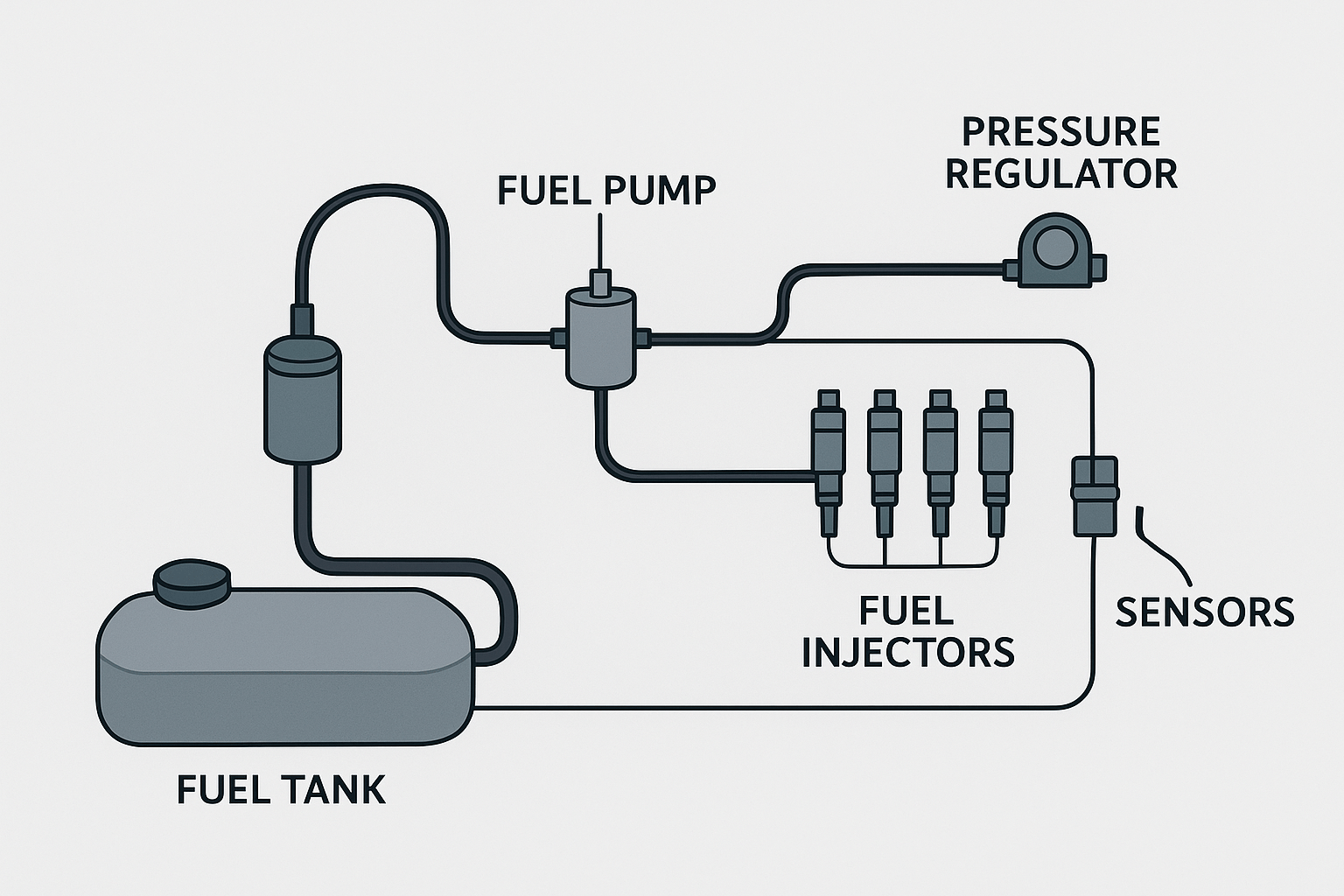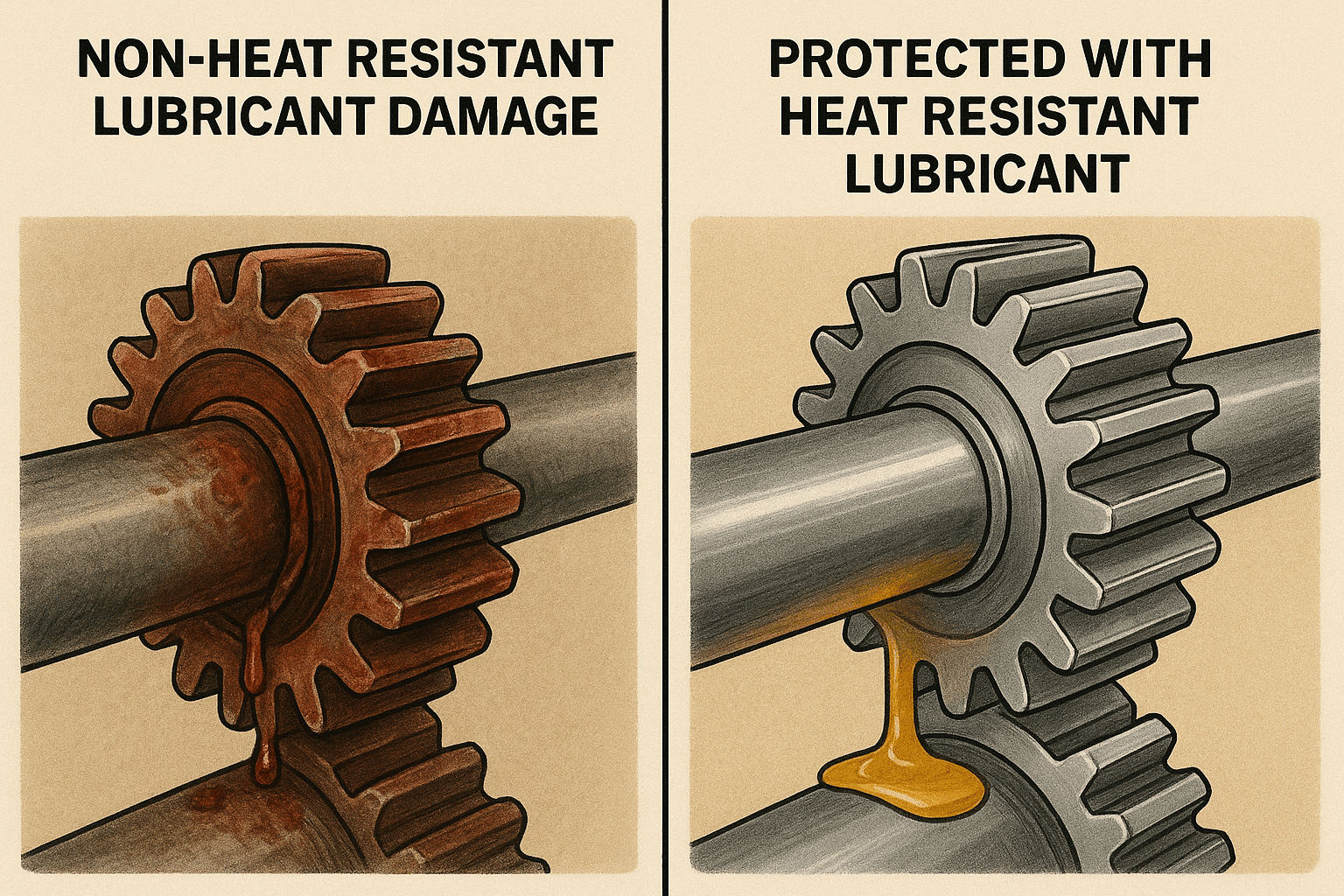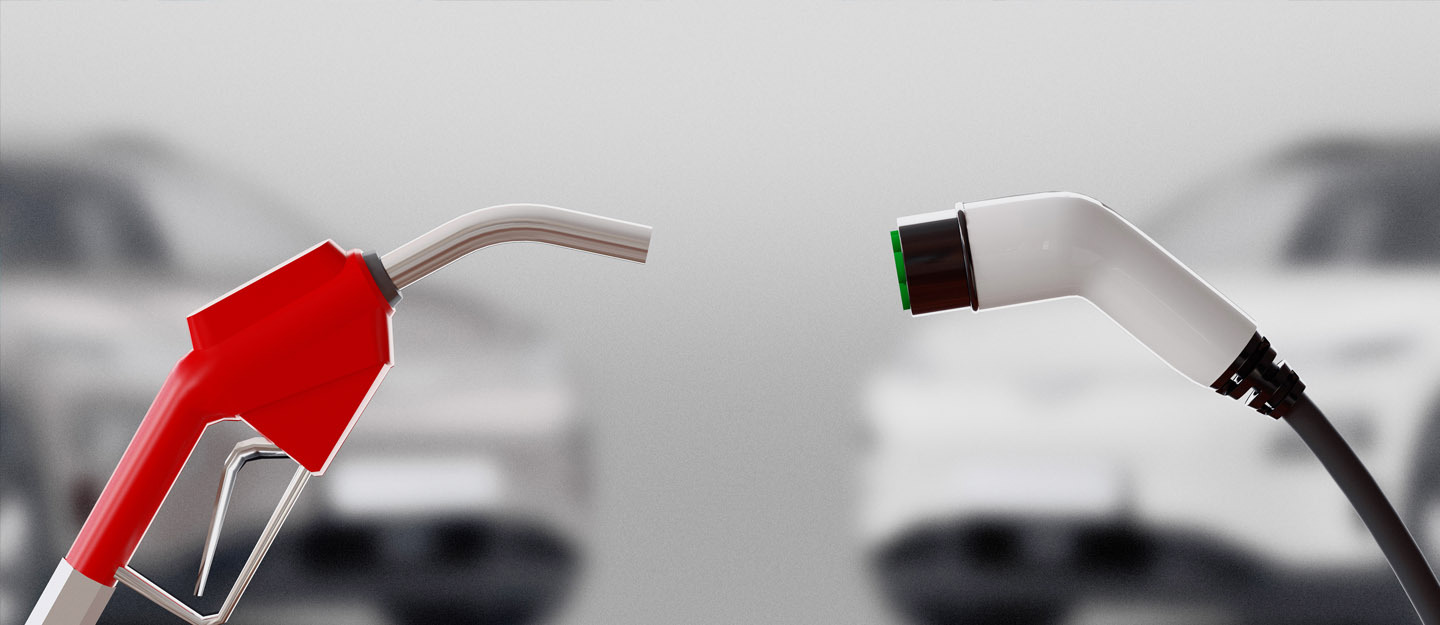Understanding the Automotive Fuel System and How to Maintain It for Peak Performance
Your vehicle’s fuel system is its lifeline — responsible for delivering the right amount of fuel, at the right time, and in the right condition to the engine
Post by: Sawiva | 2025-08-06 12:09:42

The fuel system is the heart of your car’s engine — it’s what ensures your vehicle gets the right amount of fuel, at the right pressure, and in the right form for efficient combustion. Whether you drive a petrol, diesel, hybrid, or gas-powered car, understanding the parts of your fuel system and how to maintain them can prevent breakdowns, improve performance, and save you money.
⚙️ Main Components of the Fuel System (and Their Roles)
Let’s break down the essential parts of a typical automotive fuel system, what each does, when to replace them, and how to spot potential problems.
1. Fuel Tank
Function:
Stores fuel safely before it’s pumped to the engine. It includes sensors (fuel level, temperature, and sometimes pressure), a filler neck, and a breather system to manage vapor pressure.
Maintenance & Replacement:
-
Lifespan: Usually lasts the lifetime of the car if kept clean and rust-free.
-
Inspect every: 12 months or during major service.
-
Replace if: There are rust holes, leaks, or internal corrosion.
Signs of Problems:
-
Fuel smell around the car
-
Visible leaks or damp spots under the tank
-
Decreased mileage due to vapor leaks
Fix:
Minor leaks can sometimes be repaired with sealants, but rusted or damaged tanks should be replaced. Also ensure the venting system and cap seals properly.
2. Fuel Pump
Function:
Moves fuel from the tank to the engine.
-
Electric pumps (modern cars) are usually inside the tank.
-
Mechanical pumps (older engines) are mounted on the engine block.
Maintenance & Replacement:
-
Lifespan: ~150,000–200,000 km, but may fail earlier due to dirty fuel or overheating.
-
Replace if: Pressure drops, pump whines, or engine hesitates.
Signs of Problems:
-
Whining or humming noise from the fuel tank area
-
Difficulty starting or sudden stalling
-
Power loss during acceleration
-
Engine misfires under load
Fix:
Test fuel pressure with a fuel pressure gauge. Compare readings to manufacturer specs. If pressure is low, replace the pump and check for clogged filters or blocked lines.
3. Fuel Filter
Function:
Traps dirt, debris, and rust from the fuel before it reaches injectors or carburetors.
Maintenance & Replacement:
-
Petrol cars: Every 30,000–50,000 km
-
Diesel cars: Every 20,000–30,000 km (since diesel attracts more water)
-
CNG/LPG: Every 20,000–30,000 km for vapor filters
Signs of Problems:
-
Engine struggles or stalls under acceleration
-
Reduced power or sluggish performance
-
Hard starting
-
Whining fuel pump (due to back pressure)
Fix:
Replace the filter — it’s a low-cost maintenance item that can prevent expensive injector damage. For diesel vehicles, always drain the water separator during filter changes.
4. Fuel Injectors / Carburetor
Function:
-
Fuel Injectors: Atomize and spray fuel into the combustion chamber or intake manifold.
-
Carburetors (older petrol engines): Mix fuel and air mechanically.
Maintenance & Replacement:
-
Clean injectors every 15,000–30,000 km using an injector cleaner additive or professional ultrasonic cleaning.
-
Replace if leaking, clogged, or electrically faulty.
Signs of Problems:
-
Rough idling, poor throttle response
-
Uneven acceleration or misfires
-
Excessive fuel consumption
-
Black smoke (rich mixture) or knocking (lean mixture)
Fix:
Use an OBD2 scanner to check for injector misfire codes (e.g., P0300-P0308).
Perform a balance test to see which injector is underperforming.
For carburetors, inspect float levels, jets, and choke for clogging.
5. Fuel Pressure Regulator
Function:
Maintains steady pressure in the fuel rail for consistent fuel delivery.
Maintenance & Replacement:
-
Check every: 40,000–60,000 km
-
Replace if: Fuel pressure is erratic or engine surges
Signs of Problems:
-
Strong fuel smell (leaking diaphragm)
-
Black smoke (rich running condition)
-
Hard starts or stalling
-
Fuel in vacuum line (for vacuum-controlled types)
Fix:
Test with a fuel pressure gauge. If pressure is outside spec, replace the regulator. Always check the vacuum hose for fuel contamination.
6. Fuel Lines and Hoses
Function:
Carry fuel from the tank to the engine. Often made from steel, rubber, or reinforced nylon.
Maintenance & Replacement:
-
Inspect every oil change for cracks or leaks.
-
Replace if: Lines are corroded, brittle, or leaking.
Signs of Problems:
-
Strong smell of fuel
-
Visible wet spots under the car
-
Air bubbles in transparent lines (for diesel)
Fix:
Replace damaged sections immediately. Use the correct fuel-rated hoses and clamps. Never use standard rubber hoses — they degrade quickly with fuel.
7. Sensors (in Modern Systems)
Function:
Modern ECUs rely on sensors like:
-
Fuel Pressure Sensor
-
Oxygen (O₂) Sensor
-
Mass Air Flow (MAF) Sensor
-
Throttle Position Sensor (TPS)
These help determine how much fuel to inject for efficient combustion.
Maintenance & Replacement:
-
Clean MAF every 20,000 km using MAF cleaner spray.
-
Replace O₂ sensors every 100,000–150,000 km or when CEL (Check Engine Light) indicates failure.
Signs of Problems:
-
Check Engine Light
-
Poor fuel economy
-
Hesitation or surging
-
Unstable idle
Fix:
Use an OBD2 scanner to identify faulty sensors and replace accordingly. Avoid cleaning oxygen sensors — replace them when contaminated.
⛽ Troubleshooting: How to Find Fuel System Problems
| Symptom | Likely Cause | Quick Diagnostic Tip | Fix |
|---|---|---|---|
| Hard Starting | Clogged filter, weak pump, or leaking injectors | Check fuel pressure before start | Replace filter or pump |
| Engine Hesitation | Dirty injectors, failing pump, or low fuel pressure | Use injector cleaner, test fuel pressure | Clean injectors, replace pump |
| Rough Idle | Faulty injector, vacuum leak, bad pressure regulator | Use OBD2 scan and vacuum gauge | Replace faulty injector or hose |
| Poor Fuel Economy | Faulty sensors, dirty injectors | Scan for codes, clean or replace sensors | Clean injectors, replace sensors |
| Fuel Smell | Leak in lines, tank, or regulator | Inspect lines visually | Repair or replace leaking parts |
| Black Smoke | Too much fuel (rich condition) | Check fuel pressure, air filter | Replace regulator or clean air system |
| Loss of Power | Weak pump, clogged filter, or dirty injectors | Measure fuel flow rate | Replace defective component |
🔋 Fuel System Notes by Fuel Type
Petrol Engines
-
Sensitive to injector clogging and air leaks.
-
Avoid ethanol-rich low-quality fuels if possible.
-
Use injector cleaner every few thousand kilometers.
Diesel Engines
-
Keep water out of the system — drain water separators regularly.
-
Replace filters more frequently.
-
Use diesel treatment additives to prevent bacterial growth and lubrication loss.
Hybrid Engines
-
Avoid long-term fuel storage (fuel can go stale).
-
Occasionally drive on the combustion engine to keep seals lubricated.
-
Follow software and firmware updates for fuel and EV management.
CNG/LPG Vehicles
-
Inspect tank certification dates and pressure relief valves.
-
Switch to petrol occasionally to keep injectors clean.
-
Replace gas filters and check for leaks frequently.
🧰 Pro Tips for Maintaining Fuel Systems
✅ Always keep at least a quarter tank of fuel — running low causes pump overheating.
✅ Use OEM filters and parts — cheap replacements can lead to pressure loss or leaks.
✅ Inspect for corrosion if you live in humid or coastal areas.
✅ Store your vehicle properly — use a fuel stabilizer for long-term parking.
✅ Avoid overfilling the tank — it can flood the evaporative emissions system (EVAP).
🚀 Conclusion
Your vehicle’s performance, fuel efficiency, and reliability all depend on a clean and properly functioning fuel system. Routine inspection, timely replacement of filters and pumps, and attention to small symptoms can prevent costly breakdowns.
No matter what powers your vehicle — petrol, diesel, hybrid, or gas — keeping your fuel system in peak condition ensures that every drop of fuel delivers the power you paid for.



